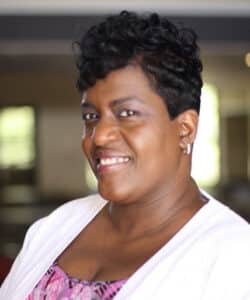Nurses have numerous roles and responsibilities including charting. Charting is important because it can prevent errors, helps with accurate assessment and diagnosis, and improves outcomes for the patient according to Cherlyn Shultz-Ruth, DNP, MSN, RN, Dean of Nursing, Arizona College of Nursing — Dallas Campus.
Originally Posted on Apr 18th, 2023 on Nurse.com By: Lisette Hilton
According to the American Nurses Association (ANA), clear and accurate documentation is essential for safe, quality, evidence-based nursing practice. This applies across settings, for registered and advanced practice nurses alike, according to ANA’s Principles for Nursing Documentation Guidance for Registered Nurses.
“Charting is important because it can prevent errors, helps with accurate assessment and diagnosis, and improves outcomes for the patient,” said Cherlyn Shultz-Ruth, DNP, MSN, RN, Dean of Nursing, Arizona College of Nursing — Dallas Campus. “It can also support your account of the care provided to a patient if needed in malpractice litigation.”
Yet quality charting for nurses can be a challenge. One study highlighted four factors — individual, social, organizational, and technological — that emerged when they held focus groups with primary care nurses and educators to understand barriers to quality documentation practices. Participants pointed to multiple hurdles, including unstable system access, fragmented systems for documentation, the perception that documentation had lower priority than other tasks, and a lack of motivation to comply with routines or policies.
Nurse charting’s growing role
Overcoming documentation challenges is key in the acute care setting, where charting is taking an even more prominent role in patient care and safety, according to Natalia Cineas, DNP, RN, NEA-BC, FAAN, Senior Vice President and Chief Nursing Executive at New York City (NYC) Health and Hospitals.
For example, technology is making documentation more universal and transparent making a nurse’s notes potentially available throughout the entire hospital — even the entire system. NYC Health and Hospitals has connected its 11 acute care hospitals, five nursing homes, community nurses, and more than 56 clinics with the system’s electronic medical record (EMR).
Charting tips and techniques
Effective nursing notes should tell the patient’s story, according to Cineas.
“Nurse charting is a true [representation] of what is happening with the patient and the nurse’s story of what is happening with the patient,” she said. “It is a catalog of different elements of the patient before admission, after admission, post discharge … a record of the patient’s history.”
Nurses should strive for charting that is clear, concise, complete, and timely, according to Nicole Morris MSN, RN-C-OB, C-EFM, Senior Director of Nursing Education at NYC Health and Hospitals.
Good nursing notes provide a chronological account of the patient’s progress, the care provided, and the patient’s response to that care, according to Shultz-Ruth. However, Shultz-Ruth pointed out actions to avoid when completing documentation:
- Try to avoid using shorthand and abbreviations that are not known and don’t clearly express what is occurring with the patient.
- Do not copy charting from your colleagues. It’s important to make your own evaluation of the patient.
- Avoid fragmented documentation. Effective charting provides essential information needed for the continuity of care.
When charting, it’s imperative to stick to the facts. “Stick with what you’re seeing or experiencing versus what you feel and what you think,” Cineas said. “[Because a] medical record is subject to review — whether it’s by a regulatory agency or from a legal perspective.”

It’s understandable to feel frustrated or overwhelmed with challenging patients. However, charting is not the time to vent or express annoyance with a patient. “Your charting should be easy to understand to anyone providing care to the patient,” Shultz-Ruth said. “The key is to be consistent with each and every patient and not cut corners.”
Charting using current technology can also help alert nurses to patients’ needs. Proper documentation using EMR drop-down menus, flow charts, free texting, or some combination of these helps with clinical judgment and patient assessment, including alerting to the possibility that a patient is deteriorating, Morris said.
Overcoming challenges
Nurses are busy, so it’s important that charting becomes more seamless. One way to do that is to ensure that the equipment nurses use can interface with the EMR, suggested Cineas.
NYC Health and Hospitals is integrating many of its platforms, including telemetry and vital sign equipment, with the EMR. As a result, nurses validate the information rather than type it in, she said. In addition, the health system is also arming its nurses with handheld rovers which are mobile devices that make documenting and retrieving information easier.
Ample training from the start
Getting adequate training on charting is a challenge for many new nurses, according to Cineas. And not all nursing schools teach the importance of documentation. Part of the reason, she said, is that the COVID-19 pandemic reduced clinical placements, leaving nursing students to learn about documentation in a simulation or online.
“The days of learning what to document and how to document in a clinical setting needs to come back,” she said. Academic partnerships with employers that allow nursing students to learn about documentation in the “safe space” of nursing school would be a huge step forward, she added.
Cineas also emphasized the importance of employers listening to nurses’ concerns about documentation. For instance, NYC Health and Hospitals has a nurse residency program in which nurses can anonymously share concerns without repercussions.
“[Last year] new nurses expressed that they’re challenged by documentation,” she said. “That triggered me to conduct a fireside chat focused on documentation.” Cineas added that Morris and information technology staff members were panelists at this talk.
Early in the pandemic, documentation training transitioned from in person to online, and training on the EMR was condensed from three days to one. “[We] realized that’s not enough,” she said. “What we’re doing now from a documentation perspective is a full reset of retraining incumbent staff.”
Employers have the opportunity, post pandemic, to change nurse documentation training so that it not only covers regulatory guidelines but also ease of use, according to Cineas. She added that if there are inefficiencies in the system, such as different platforms where nurses need to enter the same information multiple times, employers should address and adjust this waste to improve their nurses’ daily workflows.
Final thoughts
Charting is an integral part of nurses’ daily tasks. While it tracks patients’ medical history, progress, and care needs, it also communicates to other healthcare professionals your interactions and observations with them. Providing effective documentation not only safeguards your patients and delivers better care outcomes, it also protects you.

